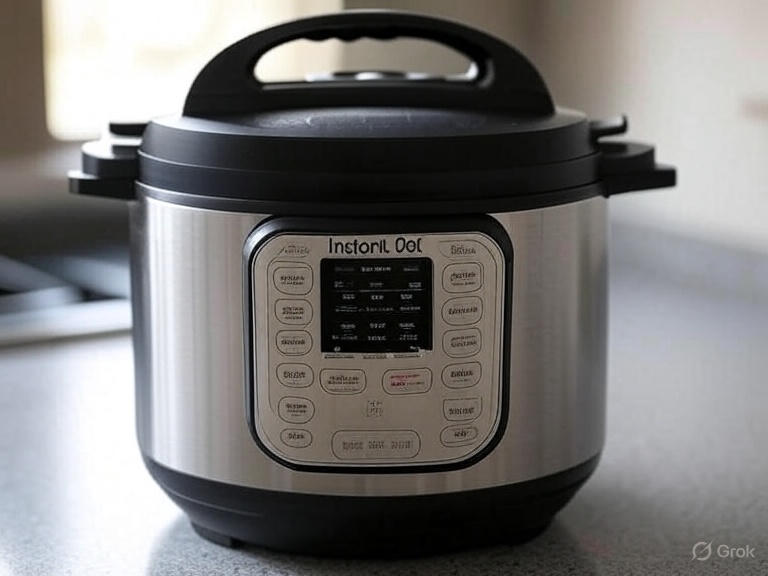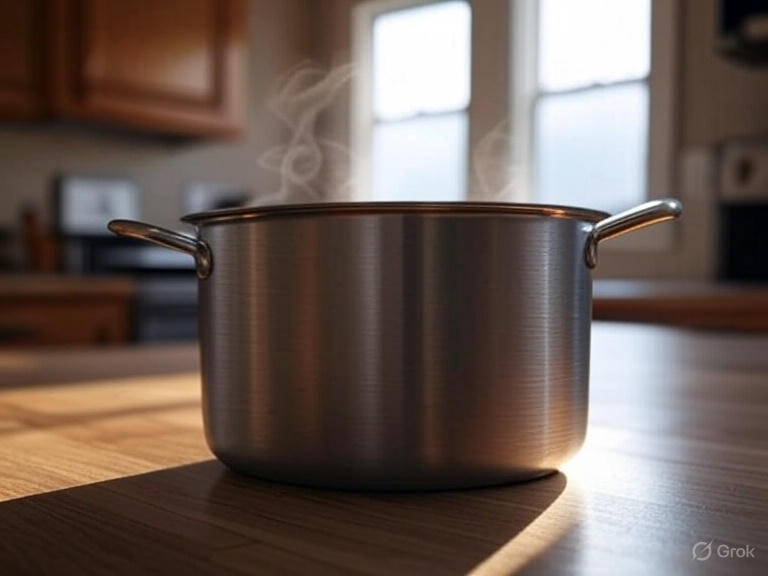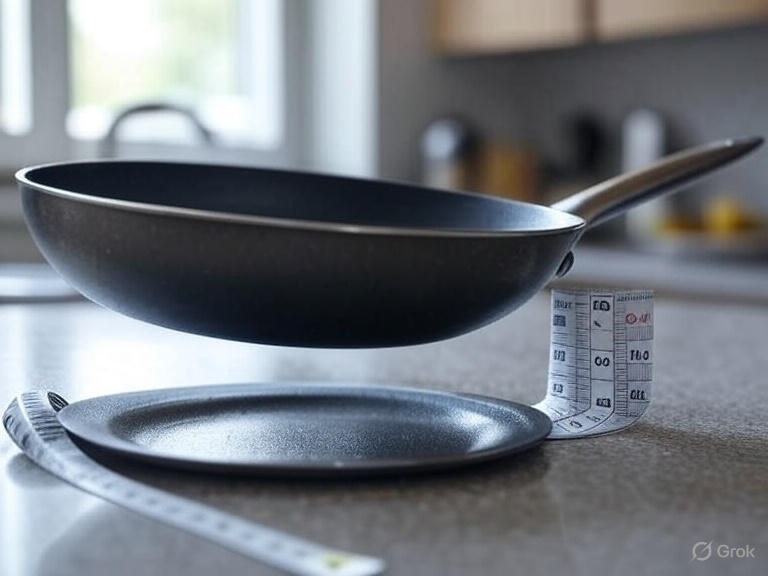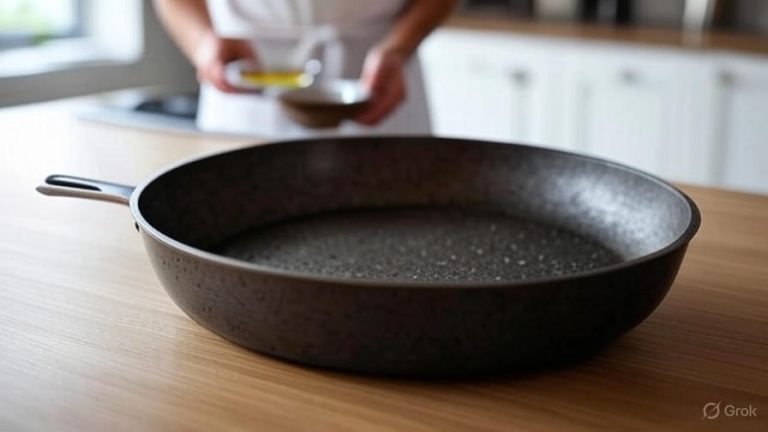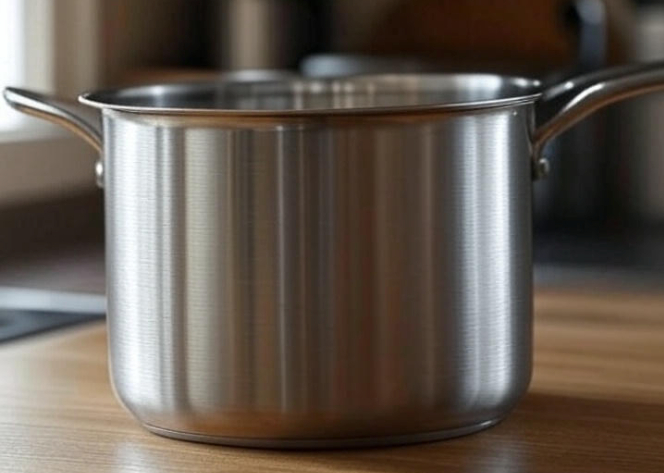How an Instant Pot Works?
The Instant Pot has revolutionized home cooking, transforming how millions of people prepare meals. This electric pressure cooker sits on countertops across the world, promising faster cooking times and tender results. But have you ever wondered exactly how this magical appliance works its culinary wonders?
Understanding the mechanics behind your Instant Pot will help you become a better cook and troubleshoot any issues that arise. Let’s dive deep into the fascinating world of pressure cooking technology and discover what makes your Instant Pot such a game-changer in the kitchen.
The Basic Principle: Pressure and Steam
Your Instant Pot operates on a simple yet brilliant scientific principle that dates back centuries. The device creates a sealed environment where steam pressure builds up, raising the boiling point of water and dramatically reducing cooking times.
At sea level, water boils at 212°F (100°C). When you trap steam inside a sealed container, the pressure increases, which forces the boiling point higher. Inside your Instant Pot, water reaches temperatures of approximately 250°F (121°C) at 15 PSI (pounds per square inch). This higher temperature cooks food much faster than traditional methods.
The pressure cooking process breaks down tough fibers in meat and vegetables more efficiently than conventional cooking. Collagen in meat converts to gelatin quickly, creating tender, flavorful results in a fraction of the usual time. Beans that normally require hours of soaking and cooking become perfectly tender in under an hour.
Essential Components of Your Instant Pot
Every Instant Pot contains several crucial components that work together to create the perfect pressure cooking environment. Understanding these parts helps you use your appliance more effectively and maintain it properly.
The Inner Pot
The stainless steel inner pot serves as the cooking vessel where all your ingredients combine. This removable pot features a tri-ply bottom that distributes heat evenly, preventing hot spots that could burn your food. The pot’s size varies depending on your Instant Pot model, ranging from 3 quarts to 8 quarts or larger.
The inner pot’s design includes measurement markings that help you add the correct amount of liquid for pressure cooking. Most recipes require at least one cup of liquid to generate sufficient steam for pressurization.
The Sealing Ring
The silicone sealing ring creates an airtight seal between the lid and the pot. This flexible ring expands when heated, forming a perfect barrier that prevents steam from escaping. Without a properly installed sealing ring, your Instant Pot cannot build pressure.
The sealing ring requires regular replacement because it absorbs odors and flavors from cooking. Most manufacturers recommend replacing the ring every 12-18 months, depending on usage frequency. Many users keep separate rings for sweet and savory dishes to prevent flavor transfer.
The Steam Release Valve
The steam release valve controls pressure inside your Instant Pot. This small but critical component has two positions: sealing and venting. When set to sealing, the valve traps steam inside, allowing pressure to build. When moved to venting, it releases steam and pressure.
The valve’s design includes a weighted mechanism that automatically releases excess pressure if levels become too high. This safety feature prevents dangerous over-pressurization that could damage the appliance or cause injury.
The Float Valve
The float valve acts as a pressure indicator, showing you when your Instant Pot has reached full pressure. This small pin rises when pressure builds inside the pot and drops when pressure releases. The float valve also serves as an additional safety lock, preventing the lid from opening while the pot remains under pressure.
When the float valve drops completely, you know it’s safe to open your Instant Pot. Never attempt to force the lid open while the float valve remains elevated, as this indicates dangerous pressure levels inside.
The Pressure Building Process
Understanding how your Instant Pot builds pressure helps you time your cooking more accurately and troubleshoot common issues. The pressurization process follows a predictable sequence that experienced users learn to recognize.
Initial Heating Phase
When you start a pressure cooking program, the heating element at the bottom of the base begins warming the inner pot. The liquid inside starts heating gradually, and you’ll notice steam beginning to escape from the steam release valve.
During this phase, the Instant Pot display typically shows “On” rather than counting down cooking time. This heating period can take anywhere from 5 to 30 minutes, depending on the amount and temperature of ingredients you’ve added.
Steam Generation
As the liquid reaches boiling point, steam production increases dramatically. The steam fills the empty space above your food, gradually building pressure. The float valve begins to rise as pressure increases, and steam output from the release valve intensifies.
Pressure Achievement
Once sufficient pressure builds up (typically 10.15-11.6 PSI for most models), the float valve locks into the up position, and the timer begins counting down your programmed cooking time. The heating element cycles on and off to maintain consistent pressure throughout the cooking cycle.
The Instant Pot’s sensors continuously monitor pressure levels, adjusting heat output to keep pressure within the optimal range. This automated pressure regulation distinguishes electric pressure cookers from stovetop versions that require manual monitoring.
Different Cooking Methods Explained
Your Instant Pot offers multiple cooking functions beyond basic pressure cooking. Each method uses different heating patterns and pressure levels to achieve specific culinary results.
Pressure Cooking Mode
The signature pressure cooking function uses high pressure and temperature to cook food quickly. This mode works exceptionally well for tough cuts of meat, dried beans, grains, and vegetables that benefit from rapid cooking.
The high-pressure environment breaks down cellular structures in food, making nutrients more bioavailable and flavors more concentrated. Pressure cooking also retains more vitamins and minerals compared to boiling, since nutrients don’t leach into discarded cooking water.
Slow Cooking Function
The slow cooking function transforms your Instant Pot into a traditional slow cooker. This mode uses low heat over extended periods without building pressure. The lid remains slightly vented to allow moisture escape, creating the same cooking environment as a conventional slow cooker.
Slow cooking works beautifully for delicate dishes that might break apart under pressure, such as fish, certain vegetables, or recipes that benefit from gradual flavor development.
Sauté Mode
The sauté function activates the heating element without the lid, allowing you to brown meat, caramelize onions, or reduce sauces. This feature eliminates the need for a separate pan when recipes call for initial browning before pressure cooking.
Different sauté temperature settings (normal, more, less) give you control over heat intensity. The “more” setting provides high heat for searing, while “less” offers gentle heat for delicate sautéing tasks.
Steam Function
The steam cooking mode uses a lower pressure setting and a steam rack to cook foods above boiling water. This gentle cooking method works perfectly for vegetables, fish, and dumplings that you want to cook without submerging in liquid.
Steam cooking preserves the natural texture and color of vegetables while cooking them quickly and evenly. The steam rack elevates food above the water level, ensuring proper steam circulation.
Safety Features That Keep You Protected
Modern Instant Pots include numerous safety mechanisms that make pressure cooking much safer than older stovetop models. These features work automatically to prevent accidents and equipment damage.
Lid Safety Lock
The lid locking mechanism prevents you from opening the Instant Pot while pressure remains inside. The lock engages automatically when pressure builds and releases only when pressure drops to safe levels.
This safety feature eliminates the risk of steam burns that could occur if someone attempted to open a pressurized cooker. The mechanical lock makes it physically impossible to remove the lid until it’s completely safe.
Pressure Release Safety
If internal pressure exceeds safe limits, multiple release mechanisms activate automatically. The primary steam release valve opens to vent excess pressure, while backup systems provide additional protection.
The anti-blockage vent prevents food particles from clogging steam release pathways. If the main vent becomes blocked, secondary vents ensure pressure can still escape safely.
Temperature Monitoring
Built-in temperature sensors continuously monitor the cooking environment and prevent overheating. If temperatures exceed safe parameters, the heating element shuts off automatically.
These sensors also detect when insufficient liquid remains in the pot, preventing dry burning that could damage the appliance or create dangerous conditions.
Electrical Safety Features
Your Instant Pot includes electrical safeguards that protect against power surges, short circuits, and overheating. These features shut down the unit automatically if electrical problems occur.
Ground fault protection prevents electrical shock hazards, while thermal fuses provide backup protection against overheating situations that other safety systems might miss.
Troubleshooting Common Issues
Even with excellent engineering, Instant Pots occasionally experience problems that prevent proper operation. Understanding common issues helps you resolve problems quickly and get back to cooking.
Failure to Build Pressure
The most common problem occurs when your Instant Pot won’t reach pressure. Several factors can cause this issue, but most have simple solutions.
Check that your sealing ring sits properly in its groove around the lid. A displaced or damaged ring cannot create the airtight seal necessary for pressure building. Ensure the steam release valve is set to the sealing position, not venting.
Insufficient liquid also prevents proper pressurization. Most recipes require at least one cup of liquid, but thick sauces or dairy products may need additional water or broth to generate adequate steam.
Slow Pressure Building
Sometimes your Instant Pot takes much longer than usual to reach pressure. Cold ingredients straight from the refrigerator or freezer significantly extend the heating time required for pressurization.
Large quantities of food also increase the time needed to build pressure. A pot filled to capacity takes much longer to heat than one with smaller portions. Plan extra time when cooking large batches.
Steam Leaking During Cooking
Steam escaping from areas other than the release valve indicates seal problems. Check that the sealing ring remains clean and properly positioned. Food particles or grease on the ring prevent proper sealing.
Examine the lid and pot rim for damage or warping that might prevent proper contact. Even small dents or scratches can compromise the seal and allow steam to escape.
Error Messages and Codes
Modern Instant Pot models display error codes when problems occur. Common codes include “burn” warnings when food sticks to the bottom, “overheat” messages when temperatures exceed safe limits, and “lid” alerts when the lid isn’t properly positioned.
Each error code indicates specific problems with straightforward solutions. Consult your user manual for complete error code explanations and resolution steps.
Maximizing Your Instant Pot’s Performance
Getting the best results from your Instant Pot requires understanding how to optimize its performance for different types of cooking. Small adjustments in technique can dramatically improve your culinary outcomes.
Liquid Requirements and Ratios
Every pressure cooking recipe needs adequate liquid to generate steam, but too much liquid can dilute flavors and create soggy textures. Understanding proper liquid ratios for different foods helps you achieve perfect results consistently.
Dense foods like grains and legumes absorb significant amounts of liquid during cooking. These ingredients often require ratios of 1:1 or higher (liquid to food). Vegetables and meats need less additional liquid since they release moisture during cooking.
Layering Techniques
Proper ingredient layering ensures even cooking and prevents burning. Place liquids and sauces at the bottom, where they contact the heating element directly. Layer vegetables and proteins above liquids, allowing steam to circulate freely.
Avoid overpacking your Instant Pot, which can prevent proper steam circulation and lead to uneven cooking. Leave at least one-third of the pot empty to allow for food expansion and adequate steam space.
Natural vs. Quick Release Methods
The pressure release method you choose affects your final results significantly. Natural release allows pressure to drop gradually as the pot cools, which continues cooking food gently and prevents delicate items from breaking apart.
Quick release immediately vents all steam and pressure, stopping the cooking process instantly. This method works well for vegetables that you want to remain crisp or when you need to add additional ingredients partway through cooking.
Maintenance and Care Tips
Proper maintenance extends your Instant Pot’s lifespan and ensures consistent performance. Regular cleaning and component replacement keep your appliance working safely and effectively.
Daily Cleaning Routine
After each use, wash the inner pot, lid, and sealing ring with warm, soapy water. Pay special attention to the lid’s underside, where food particles and grease can accumulate around the steam release valve and float valve.
Clean the condensation collector regularly, as trapped moisture can develop odors or promote bacterial growth. This small cup catches steam that condenses on the lid during cooking.
Deep Cleaning Procedures
Monthly deep cleaning removes mineral deposits and stubborn odors that regular washing might miss. Use white vinegar and water solutions to dissolve mineral buildup from hard water.
For persistent odors in the sealing ring, soak it in baking soda solution or replace it entirely. The sealing ring’s porous nature makes it prone to absorbing strong flavors that regular cleaning cannot eliminate.
Component Replacement Schedule
Replace sealing rings every 12-18 months or when they show signs of cracking, permanent odor absorption, or loss of flexibility. Keep spare rings on hand so you’re never without a properly functioning seal.
Steam release valves and float valves typically last much longer but should be inspected regularly for damage or blockages. Replace these components if they become damaged or fail to function properly.
The Science Behind Faster Cooking
The dramatic time savings your Instant Pot provides result from fundamental changes in how heat transfers to food. Understanding this science helps you appreciate why pressure cooking works so effectively for certain dishes.
Heat Transfer Efficiency
Higher temperatures achieved under pressure transfer heat to food much more efficiently than conventional cooking methods. The temperature difference between the cooking environment and food interior drives heat transfer speed.
At 250°F instead of 212°F, your Instant Pot cooks food nearly 40% faster than boiling. This temperature increase affects all cooking processes, from protein denaturation to starch gelatinization.
Moisture Retention Benefits
The sealed environment prevents moisture loss that occurs during conventional cooking. This retained moisture keeps food from drying out and helps tough connective tissues break down more effectively.
Steam cooking also preserves water-soluble vitamins that would otherwise leach into cooking water and get discarded. Your pressure-cooked vegetables retain more nutritional value than those prepared by boiling.
Flavor Concentration Effects
The pressurized environment concentrates flavors by preventing aromatic compounds from escaping with steam. Herbs, spices, and other flavorings infuse into food more completely under pressure.
This flavor concentration effect explains why pressure-cooked dishes often taste more intense and satisfying than their conventionally cooked counterparts, even when using identical ingredients and seasonings.
Energy Efficiency and Environmental Impact
Your Instant Pot uses significantly less energy than conventional cooking methods, making it an environmentally friendly choice for meal preparation. Understanding these efficiency gains helps you make more sustainable cooking decisions.
Reduced Cooking Times
Shorter cooking times directly translate to lower energy consumption. A dish that normally requires two hours in a conventional oven might cook in 30 minutes in your Instant Pot, using 75% less energy.
The efficient heating element and excellent insulation minimize heat loss during cooking. Unlike ovens that heat large air spaces, your Instant Pot focuses energy directly on heating food and generating steam.
Multi-Function Convenience
The ability to sauté, pressure cook, slow cook, and steam in one appliance reduces the need for multiple kitchen devices. This consolidation saves counter space and reduces overall energy consumption in your kitchen.
One appliance performing multiple functions also means fewer manufacturing resources and less electronic waste when devices reach the end of their useful lives.
Conclusion
Your Instant Pot represents sophisticated engineering packed into a user-friendly appliance that transforms how you approach meal preparation. The combination of pressure cooking science, safety features, and versatile functions creates a tool that saves time while producing exceptional results.
Understanding how your Instant Pot works empowers you to use it more effectively and troubleshoot problems when they arise. The interplay between pressure, temperature, and steam creates cooking conditions that break down tough fibers, concentrate flavors, and retain nutrients better than many traditional methods.
The safety features built into modern electric pressure cookers make this technology accessible to home cooks who might have been intimidated by older stovetop models. Automatic pressure regulation, multiple safety locks, and error detection systems provide peace of mind while you explore new cooking techniques.
Whether you’re preparing a quick weeknight dinner or experimenting with complex recipes, your Instant Pot’s scientific principles remain consistent. Master these fundamentals, and you’ll discover endless possibilities for creating delicious, nutritious meals in a fraction of the traditional cooking time.
The next time you hear that satisfying hiss of steam or watch the float valve rise, you’ll appreciate the remarkable engineering that makes your favorite kitchen appliance such an indispensable tool for modern cooking.

